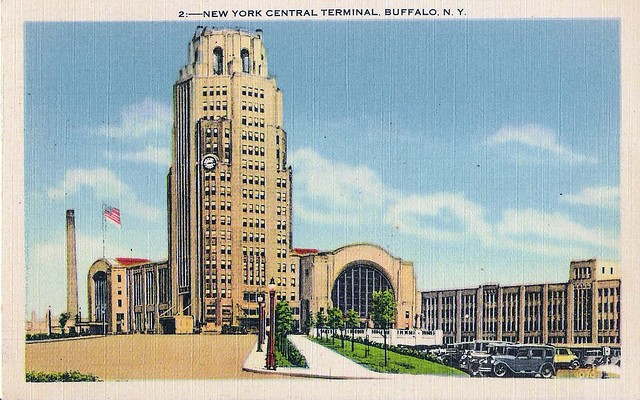While the District Department of Transportation has pushed back the Eastern Downtown Protected Bike Lane project to 2018, they have also narrowed the project down to two options, alternative three on 6th St NW and alternative four on 9th St NW. I compared 6th and 9th street options to figure out which I prefer.
6th St NW would place a cycletrack or two-way protected bike lane on the east side of the street.
9th St NW would also place a cycletrack or two-way protected bike lane on the east side of the street.
Potential conflicts
6th St has three public parking garages, one alley leading to a parking garage, a fire station, and a Hampton Inn drop off lane, all of which are high conflict zones for cyclists. In comparison, 9th St has three garages but two are residential and one is for a hotel and combined with two narrow entrance and exit curb cuts. 9th St also has a gas station with two curb cuts but DC gas stations are an endangered species so I do not expect this one to be there in five years. While 6th St is two-way, 9th St is one-way for about one-third of its length which forces cyclists heading in the opposite direct to stop at a disproportionate number of traffic lights (which occurs on 15th St today). Despite that and in terms of conflicts and curb cuts, 9th St is the clear choice. See chart for more detailed comparison.
Neither option has major conflicts with bus service. 6th St only has one block of northbound bus service with no official stop. 9th St has only southbound bus service which would stop on the other side of the street. For only block between Constitution and Pennsylvania, there is a northbound bus stop and layover parking, but since buses only turn right into the facility and right to exit, the bike lane could between the bus lane and southbound traffic lanes.
Factoring impacting bike lane
| ||
Factors
|
6th St NW
|
9th St NW
|
length
|
1.6
|
1.7
|
Curb cuts
|
16
|
13
|
average curb cut per mile
|
0.1 or 528'
|
0.13 or 690'
|
Street intersections
|
20
|
19
|
average intersection per mile
|
0.08 or 422'
|
0.089 or 472'
|
Bike lanes intersected
|
6
|
7
|
Bus impact
|
minimal, D4 northbound for 1 block would only require a small pedestrian island or removal of a stop
|
minimal because all southbound except between Pennsylvania and Constitution bus stop requires curb separation as buses come in only from right and exit right
|
Northern connections
|
Florida Ave traffic sewer
|
U St and 9:30 Club
|
Southern connections
|
Constitution Ave midblock
|
9th St Expressway
|
Direct connection to mall
|
no
|
no
|
Number of churches' eyes poked
|
2
|
0
|
Number of church curbs touched
|
1 (Springfield Baptist Curch)
|
1 (New Bethel Baptist Church)
|
Destinations along route
|
residential, offices, and few restaurants/businesses
|
More restaurants and businesses and convention center
|
Future connections from MoveDC
|
4
|
4
|
Number of cars per day upper
|
11,600
|
14,800
|
Number of cars per day lower
|
15,700
|
13,600
|
Metro entrances
|
0
|
1
|
Number of bikeshare stations within 1 block
|
4
|
9
|
Existing bike to work (2013) by census tract (%)
|
5.6%
|
5.1%
|
Existing bike to work (2013) by census tract (#)
|
554
|
689
|
Connections
Both options have the almost the same amount of connections, 9th St connecting to New York Ave and 6th not. However, neither have a direct connection to the Mall which is a key destination. 9th St has an underground expressway and the National Gallery of Art Sculpture in the way. 6th ends midblock at the National Gallery of Art although it is easier on 6th to use Pennsylvania Ave to go one block and two traffic lights to the 4th St bike lanes. Making the same connection on 9th requires two more blocks and traffic lights or crossing over three lanes of expressway traffic to follow a narrow sidewalk. Widening this sidewalk would impact the Smithsonian Butterfly Habitats and putting one in on the other side of 9th would impact the maintenance access to the Pavilion Café. Any of that work is beyond the scope of the project and would require difficult negotiations with multiple federal stakeholders.
At the north end, 6th St dumps cyclists onto the Florida Ave traffic sewer although the blocks across the street have relatively calmed traffic. In terms of people biking to work per the 2013 American Community Survey, 554 or 5.6%, of residents whose census tract touches 6th St bike to work. While outside of the project area, 6th St connects to Howard University which has the census tract with the highest number of people riding to work in the entire city, 18.6% or 412, and there are several other tracts with high numbers nearby. In contrast, 9th St dumps cyclists onto Florida Ave and U St and also continues north. Future expansions could take it north along Florida Ave to the 11th St bike lanes. U St is a popular destination. 5.1% or 689 residents bike to work in census tracts touching 9th St, higher than 6th St. But in the downtown portion of the project, this drops to 0.4% and 0.6%, indicating that those areas are not at all bike friendly.
Given those factors, I think 9th St is the best option. There is less potential conflict, more businesses to attract riders, and a larger untapped rider base along its route. We will see what is eventually built.
For more:
http://dccycletrack.com/preliminary-alternatives.html
http://www.wemovedc.org/resources/Final/Part%202_Plan_Elements/Bicycle.pdfYellow=6th St
Blue=9th St
Red dots=Capital Bikeshare stations
Light green=bike lanes
Dark green=Pennsylvania Ave protected bike lane







